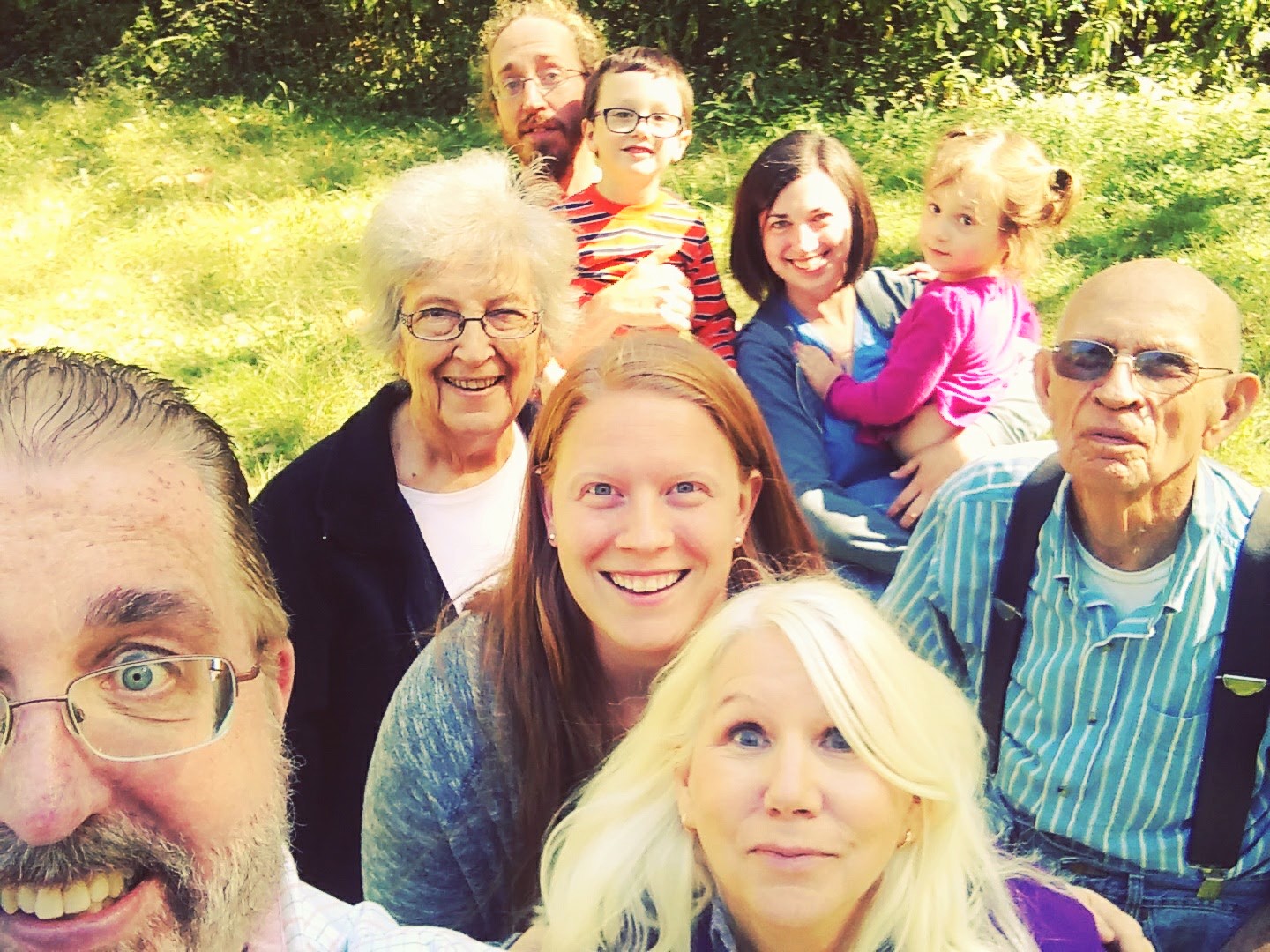
by Scott Howard | Aug 2, 2017 | Marketing and Advertising Insights, ScLoHo's Collective Wisdom, The Not-So-Secret Writings of ScLoHo, WOWO Fort Wayne Radio Advertising with Scott Howard
Today, I’m going to talk to you from my generational perspective and I have one question for you:
Do You Want Our Money?
I am a young Baby Boomer. I am also a WOWO Radio Listener.
And I work for WOWO in the advertising sales department. That means I am the dude you can talk to about buying advertising for your company on WOWO. You can email me directly at my work email. It’s Scott@WOWO.com
But the rest of this piece is about me and my generation, the Baby Boomers. I just read an article from Mediapost that says that too many businesses are losing out because they are ignoring the Baby Boomer Generation with their advertising.
As a member of that age group and one that also deals with requests from advertising agencies, I totally agree.
First of all, let me set the stage with some facts from the Mediapost article and elsewhere. 
The Boomer markets (those between 53 and 71 years of age) are comprised of approximately 78 million customers.
That is the biggest demographic group (age wise) in this country. It’s also the group that is spending the big bucks that younger generations wish they had to spend.
According to a Pew survey, Boomers are outspending every other affluent category by $1 trillion per year. It was predicted that annual spending would exceed $4.6 trillion per year by 2015, and it has. The aging Boomer customer is today’s target population and, even more so, tomorrow’s.
The Mediapost article talks about the digital disconnect:
Seventy percent of all Baby Boomers surf online. It’s estimated that those 50 and up spend more than $7 billion every year in online purchases. Several media surveys discovered that approximately 17% of all those surveyed in the 45 and over age groups believe that online advertising is intended for them.
Look at those numbers for a second. 70% of all of us Baby Boomers surf online. That includes the retired ones, by the way. But less than 20%, the number I quoted is only 17% of Boomers believe online advertising is intended for them. 
This is a wake up call to anyone under the age of 50 who is responsible for advertising and marketing. I don’t care if you run your own business, your parents business or work for an advertising agency… you need to pay attention and understand there are a whole helluva lot of people over 50 that can make you successful if you simply invite them to spend money with you instead of ignoring us.
A few more quotes from the Mediapost article:
Be willing to change your frame of reference (paradigm shift). Don’t let “Boomer customer myopia” interfere with an intelligent approach to improving Boomer customer satisfaction.
In other words, the first step is recognizing the opportunity that I’m talking about and be willing to adjust your marketing tactics to invite Baby Boomers to spend their money with you. 
Avoid using the age of target markets as the determining factor… Use your knowledge of life stage changes to determine your approach to service and marketing communications improvement.
I’m going to share with you what they mean regarding Life Stages in a second. But first a couple of words on how I can help you.
In the digital world, I have been advising companies for the past dozen years on how to improve their ability to be found with some basic Search Engine Optimization practices that remain relevant. I even stepped away from the radio world a couple of times to work full time in the web and social media worlds.
Today, along with connecting you with Baby Boomers via WOWO radio, I also have some proven digital marketing solutions that I can offer through the Federated Digital Solutions division of Federated Media. I saw proven because I have the data to show the results and we can talk about how to create a custom digital solution for your company if that is appropriate.
And then there is the mighty 1190 WOWO radio. Now over 90 years old as an AM radio station with one of the biggest audiences in Northeast Indiana including Fort Wayne, Allen County and surrounding counties for miles and miles, stretching into Ohio and Michigan.
Listeners can also listen to WOWO locally on 107.5 FM and online via their favorite apps or the WOWO.com website.
But here’s what you need to know about connecting your business with Baby Boomers via WOWO radio.
It’s a no-brainer. Ever since I started with WOWO in 2013, the weekly total local audience according to the ratings service has been over 100,000 listeners.
There are a couple other stations in town that have over 100,000 weekly listeners but they have a significant number of kids that make that total add up to 100,000.
WOWO’s listenership according to the ratings is 99% grown-ups. Adults age 25 and older who buy stuff.
Half of those adults are Baby Boomers like me. 
By comparison, 2nd most listened to radio station by Baby Boomers less than half the number of listeners. If you want to know why this is important, take a look or listen to last week’s advertising nugget about reach and frequency. WOWO actually reaches more Baby Boomers than any other Fort Wayne radio station, by an over 2 to 1 margin.
Just recently I was negotiating with a media buyer that wants to buy advertising that will reach 25 to 54 year olds. That is a popular sweet spot in a lot of advertising agency mindsets. And sure that may have been the correct sweet spot to target a couple decades ago when Baby Boomers were that age, it’s very limiting thinking now as I have just demonstrated.
Before I wrap this up, I want to expand on why companies need to consider Lifestyles not just age demographics.
I’m 57. 
A good friend of mine, Kelly is also 57. His daughter is heading off to her 1st year of college right this very moment.
My wife and I have 5 kids from our previous marriages and 9 grandkids. While Kelly’s daughter is starting her college days at Indiana University, our oldest grandkid is starting his college days at Purdue University. Our youngest kid is 29 with three boys.
Yes, Kelley and his wife and me and my wife are all Baby Boomers but with very different lifestyles going on.
I also tend to have a wide spread of ages in my friendship circle. The oldest is 18 years older than me. I also hang out with those that are 30 years younger than me.
It’s not just the age, but the lifestyle that you need to pay attention to when planning your advertising.
I’ve done enough talking, I want to hear from you as I ask once again on behalf of myself and the other 78 million Baby Boomers, “Do you want our money?”

by Scott Howard | Jul 30, 2017 | Marketing and Advertising Insights, ScLoHo's Collective Wisdom, ScLoHo's Media
Television viewing habits continue to shift. Have your advertising expenditures shifted too? It’s time to examine the trends for your business.
200 Channels and there is nothing on
The TV shift is real in 2017 and will only continue in the years ahead. Television viewing habits have been changing for years and as consumers, we really don’t care how we get our video content.
But for businesses that have relied on television advertising to be the lifeblood of their business, they may find themselves on life support unless they wake up and make some changes.
Saturday night my wife and I were taking care of 3 young ones, grandkids ages 8 months to 4 years old.
The parents are around 30 years old. Neither watch local television. Disney Junior is the channel of choice when the boys are up. When the parents get to watch the TV in the family room, they are selecting something from Netflix.
Saturday night after the boys went to sleep, my wife and I were flipping through the line up and finally settled on HGTV for a little while, not because we wanted to watch it, but because of all the options that were coming up, it was the most viewable. No offensive language in case we were visited by the grandkids coming downstairs for a snack and nothing that required an investment of uninterrupted time like a movie.
Granted my wife and I are Baby Boomers and we grew up with local television and later cable networks, but the past few years the networks decided that Friday and Saturday nights were not worth programming and they usually fill the prime time hours with reruns or fluff.
I’ve got a story I wrote about Baby Boomers, media and marketing coming up in a couple of days that talks about how to effectively reach us and invite us to spend our money with you and it has some information from Mediapost that should be eye-opening.
Right now, I have another Mediapost article in front of me that has some disturbing news for the television industry and if you are spending money advertising on TV, read on…
It’s titled: Good News, Bad News For TV, Video And Advertisers
The author went beyond the short term, headline grabbing information and dug through 3 years of data and here’s what he wrote:
Good News for Traditional TV – Adults spend more than five times as much time watching traditional TV than watching video on all other screens combined. Those under 25 spend about twice as much time with traditional TV than with other screens.
Bad News For Traditional TV – Two years ago, adults spent 10 times as much time, while those under 25 spent four times as much time with traditional TV. The gap between traditional TV and video on all other screens has been cut in half over the past two years — and continues to narrowing dramatically. This is also the first time I can recall when traditional TV viewing was lower in the first quarter than the fourth quarter of the same season.
In summary:
- the big screen is still watched more more than our small screens (phones, tablets and laptops).
- the drop in viewership of traditional TV, both cable and local has accelerated faster than nearly any other advertising medium in history in just the past two years. I can not think of any other advertising medium that has had a 90% decrease that survived.
- the future is not very bright for traditional TV. While the quotes above mention the under 25 year olds, I also know that the 25 to 40 year olds are following that same pattern of ignoring the TV networks, especially the local channels as I’ve witnessed in my own family.
Here’s more from the Mediapost story:
-
Good News For Netflix, Hulu, Amazon Prime
-
Good News For Mobile Video
-
Bad News For TV Advertisers – DVR and time-shifted viewing remains solid, particularly among traditional TV’s main audience —viewers 35+. But live viewing, which is the only way advertisers can know who is exposed to their commercials, is declining sharply, particularly among younger viewers.
Now where I live, in a conservative city in the midwest, Fort Wayne, Indiana, change is a little slower than on the east or west coasts of our country. That may be why business are continuing to use the local television stations, even when they have challenges with justifying their return on investment.
I met with a local business owner recently that told me he spent over $50,000 for two years advertising on of our more popular local TV stations and could only track one job, worth a few hundred bucks from that expenditure.
You probably noticed changes in your viewing habits over the recent past. I noticed a few years ago when the Emmy awards were featuring more and more programs that were not on ABC, CBS, FOX or NBC and that evolved to shows that were not even on cable. Netflix, Hulu and Amazon received 125 nominations for the next awards. ABC, CBS & NBC together only have 115.
UPDATE: After I wrote and published this article, a couple more articles arrived in my email.
The young adults time spent watching TV is dropping fast.
 You will find more statistics at Statista
You will find more statistics at Statista
So what are they watching? Take a look.
 You will find more statistics at Statista
You will find more statistics at Statista
The viewership habits have been changing for some time. Pretty soon the businesses that advertise on traditional TV will also change. Because the TV Shift is Real.

by Scott Howard | Jul 26, 2017 | Marketing and Advertising Insights, The Not-So-Secret Writings of ScLoHo, WOWO Fort Wayne Radio Advertising with Scott Howard
Reach & Frequency Matter.
There is an age old advertising nugget that has been lost over the years.
Or perhaps (and I shudder to think this is the real reason), it simply isn’t taught anymore.
What is this advertising nugget?
Reach and Frequency Matter.
Before I go any further, I should explain what those two terms mean.
Reach is how many different people your message will reach.
Frequency is how often an individual person will see/hear/read your message.
Let’s talk about this reach and frequency concept in an every day scenario first:
You order a large Pizza. How many pieces of pizza do you have and how many people can you serve?
If the pizza is sliced into 16 pieces, then the maximum number of people you can serve is 16. Everyone will get some, but no one is going to be full.
Eight people could each have two slices, or 4 people could have 4. You can do the math and come up with possibilities.
Reach is the total number of people who get at least one piece of pizza.
Frequency is how many slices of pizza each person gets.
For someone with a small appetite, they may only want 2 slices. But we all know someone that will always want that last piece because it takes a little more for them to feel full and satisfied.
Now, let’s take this reach and frequency discussion into the media and marketing world. And I’ll use the Pat Miller Program on WOWO radio as my first example.
We recently received information that there are over 50,000 adults that listen to the Pat Miller Program every week on WOWO between 3 and 6pm, weekdays. That number is the total potential reach of a commercial during his program who live in and near Fort Wayne, Indiana.
By the way, the Pat Miller Program is the most listened to radio program weekday afternoons for grown ups.
All of this is great news and important for businesses that want to invite Pat Miller Program listeners to become their customers. Why? Because there are a whole heck of a lot of them! That’s the reach factor in action.
The other part of the equation is Frequency. If you want to run just one commercial per week, the maximum frequency is always going to be one, no matter how many total people hear your commercial, if it only plays one time, then there is no way the frequency number can be greater than one.
In our pizza scenario, when you have 16 slices of pizza and share with 16 people, the frequency is also just one.
Just as one slice of pizza usually isn’t enough to feed a hungry pizza lover, one commercial per week isn’t enough in most cases to make a strong impact and convince Pat Miller Program listeners to spend money with you.
That’s why buying one commercial per week on the Pat Miller Program on WOWO Radio is not an option I offer.
Studies over the past 50 years have said we need an average frequency of 3 to 9 times exposure to an advertising message before we act. In the past decade each of us are exposed to more and more marketing messages than ever before. Some say that each of us see or hear over 10,000 marketing messages per day. Before the internet, that number was just a fraction, maybe 3,000 marketing messages per day.
Thankfully, our brains have a filtering mechanism that prevents us from being overwhelmed by all of this on the conscious level, but depending on the impact of certain marketing messages, many are stored in our subconscious where they are forgotten until we need to remember them.
An example in my life was a few years ago when I needed to call a garage door repair person and an old business card that I had not paid attention to for years came to mind and that company was the one I called to fix a broken spring at our new home.
Let’s review. Reach is the total number of individuals that can be reached by a particular marketing message. There are limits and you should understand this when you are deciding what advertising programs to invest in.
Frequency is the number of times an individual person will see or hear your marketing message and it corresponds with the number of ads you run for a particular audience.
It’s the combination of these two numbers that are key factors in the success of your advertising expenditures. If you don’t know what these numbers are for the advertising you are currently doing or are considering doing, stop. Make this a priority to find out. Once you find out these numbers and understand then you can make smart decisions about how to invest your marketing and advertising money.
I’ll be glad to help you figure this out too. I know you are busy and it can get confusing.
One side note about frequency and the success of advertisers on WOWO Radio. I spent nearly a decade in Detroit working with local businesses on their radio advertising and twice as much time doing the same in Fort Wayne, Indiana. Most of the stations I worked for before WOWO were music based stations. WOWO is a news talk radio station with not just a huge audience but a very devoted audience. The number of ads I would need to air for a company on a music based radio station is higher than the number of ads per week I need to air on WOWO because of the loyalty of WOWO’s audience.
Also factoring into the success of WOWO Advertising is the nature of the news and talk format. Pat Miller Program listeners (as well as listeners to all of our programs) are active listeners tuning into the spoken words of Pat and others. This helps them also pay attention to the spoken words in the advertising. I’ll share more on this in the future.

by Scott Howard | Jul 12, 2017 | Marketing and Advertising Insights, ScLoHo's Media, The Not-So-Secret Writings of ScLoHo
Today, a common sense approach to buying advertising that nearly anyone can figure out. You can out smart the media buyers at the advertising agencies if you simply consider How to Use Habits to Buy Advertising.
I used to work with media buyers from advertising agencies that were taught how to crunch numbers from data collection and rating services and figure out the perfect number of ads to run to come up with a winning formula.
Now they don’t even have to crunch those numbers, it’s all done for them with proprietary software that does the math and spits out the formulas.
However those kinds of systems are flawed. And many media buyers don’t know the process or they wouldn’t use the systems.
I’m going to delve into the rating systems of radio and television since that is the data I have access to. Nearly any form of media marketing including digital, print and well, you name it have similar complicated systems that are supposed to be better than what you and I can come up.
Those systems are flawed because they put too much emphasis on questionable numbers and they would routinely tell me things like, I need to place 19 commercials between 3 and 7pm to have the same results as 2 commercials between 10am and 3pm on a certain radio station.
Bizarre stuff, really and I’m not going to bore you with the details of how the software came up with crazy stuff like that.
But I’m going to show you how to beat these systems and be smart.
We are creatures of Habit.
Think about the last few days. You have your workday morning routine before you leave the house. You have your workday evening routine before you doze off at night.
Pretty predictable right?

We all follow routines
Your workday has certain routines too, I bet. Expand this thinking about routines and you’ll see patterns of media and advertising consumption based on our habits.
The key is to understand the habits of the types of people you want to reach with your advertising and then place your advertising messages where and when those people will see or hear them.
The advertising salesperson should be able to tell you something of value about the audience or readership of their advertising medium. Stuff like age, income, and other useful demographics to see if there is a connection between them and you.
Once you determine it could be a good fit, then you need to figure out how many ads and where exactly they should be placed. We call this Reach and Frequency and I’ll share more about this in the future.
But for now, the take away is that you can be pretty smart about your advertising by simply thinking about the routines of your current and potential customers. Armed with that knowledge, you can Use Habits to Buy Advertising.
Want help? Reach out to me.

by Scott Howard | Jul 5, 2017 | Marketing and Advertising Insights, ScLoHo's Collective Wisdom, The Not-So-Secret Writings of ScLoHo
Last month a couple of research articles about marketing to different generations hit my inbox. One was talking about generational differences and the other was talking about similarities.
So the title of this update, Everyone Needs A Little Love is based on what I read along with what I’ve learned and observed in my 57 years and how to apply it to your marketing.
I admit that I could write volumes about this but I’ll just hit a couple of highlights right now.
I’m also going to share some personal stuff too.

Can you count the 4 generations?
I belong to the generation known as Baby Boomers. That’s the classification of people born between 1946 and 1964 when the population exploded after World War 2 and the Korean Conflict. Our parent’s celebrated by having sex which led to having kids. Birth control was more limited back then.
The next generation is known as Generation X which is currently age 38 to 52 or so. This includes kids of the oldest Baby Boomers.
Then you’ve got the children of the younger Baby Boomers, known as Millennials. All of my kids and step-kids are in this group aged 22 to 37.
Now we have a name for the youngest generation, Centennials (consumers under the age of 21).
My grandkids are Centennials ranging in age from 18 years to 6 months. The youngest isn’t making purchasing decisions yet but he’s a consumer who is an influencer of his parents!
As a business owner or marketing person, you need to tailor your advertising to appeal to the people you want to invite to spend money with you. This includes both the message and the delivery vehicle.
Before I dig into some of the differences, let’s talk about what all generations have in common.
Everyone, no matter how young or how old, want to trust.
They want to trust that the money they spend will give them what ever it is that you are promoting.
If you are selling gluten-free food, they want to trust that your food is free of gluten.
If you are selling stylish clothing online, they want to trust that when their order arrives, it will be exactly as you said online.
If you are, well you can fill in the blank… Trust is a must for all of us. When I married my wife we both made that commitment because we trusted each other. My 6 month old grandson lets me rock him to sleep in my arms because he trusts me.
No matter what, be trustworthy. Got it? Cool.
Now here’s a couple of noteworthy items from one of the research papers I read from Mediapost:
- CENTENNIALS: The Experience GenerationThis youngest group of shoppers wants authentic brand experiences across all channels, and values quality over price or convenience. As digital natives, Centennials (consumers under the age of 21) don’t engage in the traditional customer service channels (such as phone or email), but they still expect personalized interactions with brands that understand their needs.
- MILLENNIALS: Brand LoyalistsMillennials (ages 22 to 37) stick with the companies they know and trust, demonstrating the most brand loyalty of all the generations. This means they are most open to marketing messages – assuming their interactions are personalized, brands stay true to their promises and their customer loyalty is rewarded.
- GENERATION X: Bargain HuntersOften considered the forgotten generation, Generation X (ages 38 to 52) is full of deal seekers. They want good buys on quality products, and they expect a convenient path to purchase. This group of consumers is most likely to be influenced by price and cares less about brand loyalty than other generations.
- BABY BOOMERS: Price-Savvy ShoppersPrefer brands that offer wide selections at discounted prices. Not motivated by loyalty programs or unique brand experiences, this generation wants to see a variety of well-priced products that meet their immediate needs.
There are other insights in the article that you can read at this link.
But before we wrap this up, I’m going to share with you some insight that either contradicts or complements the Mediapost article.
I’m a young Baby Boomer. I have lived through each of these life stages. A lot of the descriptions about the habits of the generations I just mentioned aren’t really characteristics of the generations. They are really descriptions of the habits nearly everyone goes through as they progress from one stage of life to the next.
So those consumers under age 21, every generation in their youth was looking for authentic experiences. You wanted to be part of the cool crowd, have friends, find love and experience real life.
Next comes life after college, reality hits, relationships become families and you want to find good and services, sometimes known as brands that you trusted and you developed your own loyalties to those things.
As the kids become teenagers and the family finances are pulled in all different directions, we really started looking for good bargains so we could afford it all. Instead of bragging about how much we paid for something when we were teens, we now bragged about how little we paid and the deal we got.
Now as we become empty nesters, different circumstances influence our shopping habits. Some have extra money to spend, some are on limited incomes. Some are supporting their kids or grandkids, while others have money tucked away in retirement accounts. The term Mediapost used, Price-Savy doesn’t mean cheap. It means experienced and hopefully not gullible.
And one last time the key to all these people of all generations and life stages is trust. Not a manufactured trust, but a genuine and earned trust. Are you and your business up for that?
I wrote this article and recorded the podcast version last week and since then, this article about generational myth busting was published on Medium.com: Worried that your Millennial employees are Going to Quit on You? Read this. http://bit.ly/2u24TNk
Want help and guidance on how to apply these to your business? Contact me.















